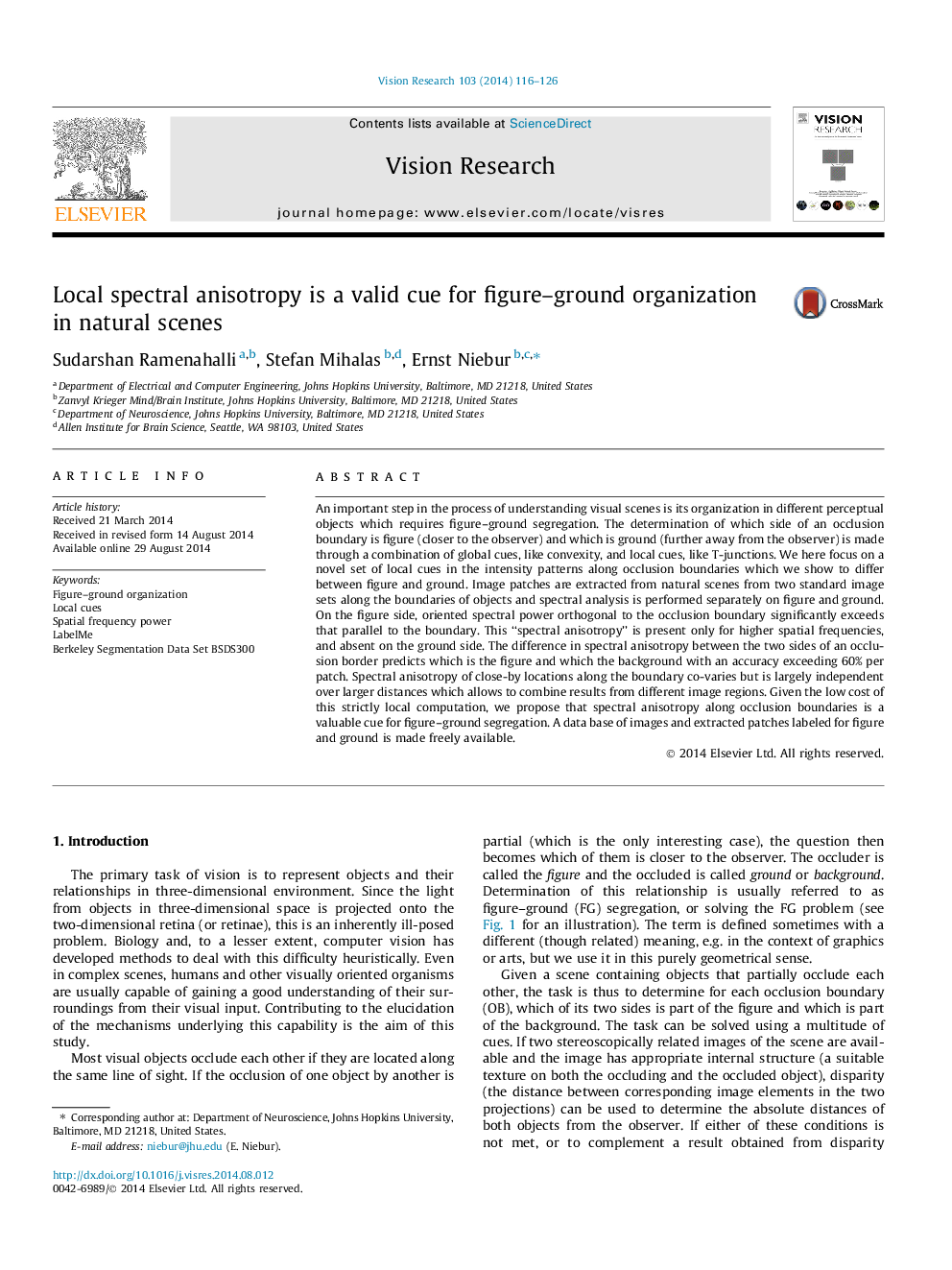| Article ID | Journal | Published Year | Pages | File Type |
|---|---|---|---|---|
| 6203409 | Vision Research | 2014 | 11 Pages |
â¢Textures differ between figure and ground at occlusion boundaries in natural scenes.â¢On the figure side, spectral power orthogonal to the boundary exceeds that along it.â¢This asymmetry is absent on the background side.â¢We show that this difference is a valid cue for figure-ground segregation.â¢This local measure is easily quantifiable and it can be computed efficiently.
An important step in the process of understanding visual scenes is its organization in different perceptual objects which requires figure-ground segregation. The determination of which side of an occlusion boundary is figure (closer to the observer) and which is ground (further away from the observer) is made through a combination of global cues, like convexity, and local cues, like T-junctions. We here focus on a novel set of local cues in the intensity patterns along occlusion boundaries which we show to differ between figure and ground. Image patches are extracted from natural scenes from two standard image sets along the boundaries of objects and spectral analysis is performed separately on figure and ground. On the figure side, oriented spectral power orthogonal to the occlusion boundary significantly exceeds that parallel to the boundary. This “spectral anisotropy” is present only for higher spatial frequencies, and absent on the ground side. The difference in spectral anisotropy between the two sides of an occlusion border predicts which is the figure and which the background with an accuracy exceeding 60% per patch. Spectral anisotropy of close-by locations along the boundary co-varies but is largely independent over larger distances which allows to combine results from different image regions. Given the low cost of this strictly local computation, we propose that spectral anisotropy along occlusion boundaries is a valuable cue for figure-ground segregation. A data base of images and extracted patches labeled for figure and ground is made freely available.
